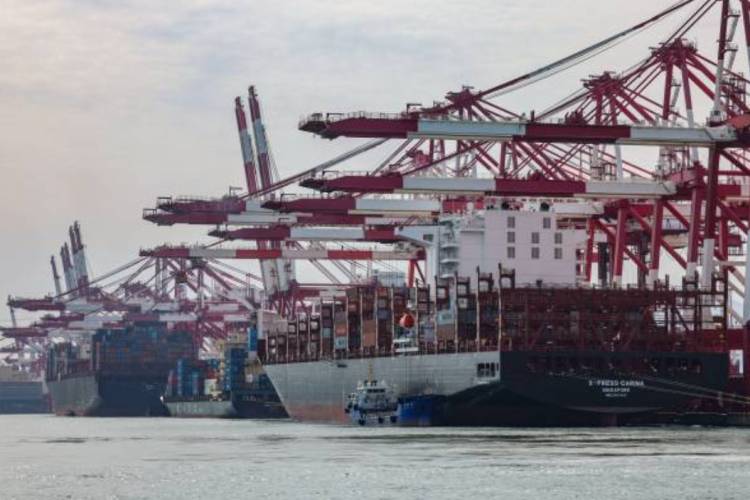
In an era of increasingly transactional and unpredictable global trade, India has taken a decisive step to address the persistent issue of third-country imports being rerouted through countries that have signed free trade agreements with India. The rampant diversion of goods—particularly from China via the ASEAN-India FTA—has led the ministry of finance to amend the Customs (Administration of Rules of Origin under Trade Agreements) Rules, 2020. A key change in this amendment is the replacement of the term certificate of origin with proof of origin—a move that promises both regulatory relief and enhanced enforcement.
This dual-purpose policy reform simplifies compliance for genuine traders while tightening the noose on those exploiting India’s free trade agreements to circumvent duties. By shifting the onus of origin documentation from regulatory agencies to exporting firms, the amendment streamlines trade processes, cutting red tape, reducing costs, and aligning India’s practices with global standards. It comes at a critical juncture as India prepares to negotiate mini-FTAs with major partners including the United States, the European Union, and the United Kingdom.
READ | Heatwaves forecast: India cities need to prepare for extreme climate
Crucially, this change also equips Indian customs authorities with greater discretion to scrutinise import claims and identify tariff evasion, particularly the influx of Chinese goods disguised as originating from ASEAN nations.
Threat of misuse of free trade agreements
The principal driver behind this reform is the growing trend of Chinese products being rerouted through intermediary countries to exploit India’s preferential trade terms. Investigations have exposed how a wide range of goods—including mobile phones, steel, set-top boxes, dairy items, textiles, and chemicals—have entered India bearing false origin claims from Vietnam, Singapore, and Indonesia.
For example, since the implementation of the Regional Comprehensive Economic Partnership (RCEP), Chinese-origin steel, silk, and dairy products have increasingly arrived via ASEAN nations. Notably, imports of cheese, curds, strawberries, processed fruits, perfumes, and frozen fish from ASEAN countries have surged—despite the region historically not being a major supplier of these goods to India.
Vietnam presents a striking case: once a net importer to India, it has emerged as a major exporter since 2019, taking advantage of the ASEAN-India FTA. A particularly telling example is the import of made-up jewellery, which skyrocketed from $400 million pre-FTA to $2.7 billion in 2024. This spike highlights attempts to circumvent India’s high import duties on precious metals.
Other categories witnessing abnormal import surges include iron, steel, lead, silk, nickel, glassware, footwear, and chemicals—all from ASEAN nations lacking corresponding production capacities. One of the most concerning trends has been the influx of low-cost Chinese steel rerouted through ASEAN countries to avoid Indian tariffs.
The India-UAE Comprehensive Economic Partnership Agreement (CEPA) offers another illustration. Following the agreement, silver imports from the UAE ballooned from $400,000 in 2021 to $1.78 billion, while platinum imports soared from $800,000 to $1.77 billion by 2024. Several Indian firms have even shifted operations to the UAE to benefit from duty exemptions, driving a spike in made-up jewellery imports from $161 million to $867 million—excluding purchases brought in by passengers under Baggage Rules-2007.
A strategic policy shift
In this context, the transition from a certificate-based to a proof-based verification system under CAROTAR 2020 is a timely and calibrated move. It balances the need to liberalise trade and facilitate Indian exports with the imperative to protect domestic industries from unfair competition and tariff circumvention.
The Directorate General of Foreign Trade (DGFT) has already laid the groundwork by allowing self-certification for manufacturers under the Status Holder Scheme. Now, the broader adoption of proof-based origin verification aligns India’s framework with international best practices observed in developed markets like the US, UK, and EU. For legitimate traders, this means reduced compliance costs and fewer procedural hurdles.
At the same time, the reform grants customs authorities increased powers to investigate suspicious claims, particularly in sectors vulnerable to dumping—such as steel, electronics, electricals, chemicals, and base metals. With global trade becoming more disruptive and opaque, enforcement agencies such as Indian Customs, the Directorate of Revenue Intelligence (DRI), and the Directorate General of Trade Remedies (DGTR) will need to remain vigilant to prevent revenue leakage and trade manipulation.
The amendment updates key provisions of CAROTAR, including:
Rule 2 (Definitions)
Rule 3 (Preferential Tariff Claims)
Rule 6 (Verification Requests)
Form I (Trade Documentation)
In each case, references to certificate of origin have been replaced with proof of origin, expanding the discretion of customs authorities to seek additional evidence and conduct in-depth verifications.
Trade compliance and competitiveness
The move away from reliance on foreign-issued certificates means Indian importers must now conduct greater due diligence. Under the old system, a simple certificate often sufficed—regardless of whether the origin claim was credible. Now, with the requirement of proof, the burden of compliance and traceability has been significantly raised, discouraging misuse of free trade agreements.
The amendment also dovetails with changes made through the Finance (No. 2) Act, 2024, which revised Section 28DA of the Customs Act, 1962. The new provisions enhance the ability of customs officers to question preferential tariff claims and demand robust supporting documentation.
In essence, India’s shift to a proof-based origin framework reinforces trade integrity while simplifying the landscape for bona fide businesses. It ensures a level playing field for domestic industries, strengthens national economic interests, and aligns India more closely with global trade norms.
At a time when global trade faces mounting geopolitical and economic pressures, this strategic recalibration enables India to uphold its free trade agreements in letter and spirit—promoting competitiveness while protecting its borders from unfair practices.
Dr Ram Singh is Professor and Head, IIFT, New Delhi.
